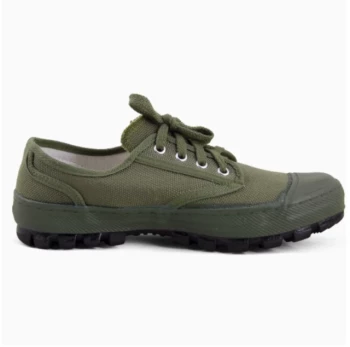For discerning footwear buyers, Goodyear welted shoes represent the pinnacle of craftsmanship—but how can you verify their authenticity, and do they justify their premium cost? This guide breaks down the construction secrets, authentication techniques, and long-term value that make these shoes a smart investment.
Identifying Genuine Goodyear Welted Shoes
The Anatomy of a Goodyear Welt: Stitching as a Key Indicator
Authentic Goodyear welting uses a distinctive double-stitching method:
- A strip of leather (welt) is sewn to the upper and insole
- The outsole is then stitched to this welt, creating a protective barrier
- Look for two parallel rows of stitching along the sole edge
Research shows this construction adds nearly double the lifespan compared to cemented soles, thanks to the replaceable components.
Red Flags: How Fake Welts Mimic Authenticity
Beware of these imitation tactics:
- Faux Stitching: Some shoes imprint stitch marks without actual thread. Run your fingernail across—real stitching has texture.
- Glued "Welts": Cheap shoes may glue a decorative welt strip. Check for separation gaps when flexing the sole.
- Inconsistent Spacing: Machine-made Goodyear welts show uniform stitch spacing (2-3mm), while hand-stitched versions have slight variations.
The Long-Term Value of Goodyear Welt Construction
Durability and Resoling: A Cost-Effective Lifespan
Goodyear welted shoes outperform alternatives through:
- Resoling Capability: Unlike cemented shoes that become unusable when soles wear out, welted shoes can undergo multiple resoling (typically 3-5 times)
- Moisture Resistance: The welt acts as a gasket, preventing water from seeping into the insole—a common failure point in Blake stitched shoes
- Cork Adaptation: The cork layer molds to your foot over weeks of wear, offering personalized comfort that improves with age
Comparison with Blake Stitch and Cemented Soles
| Feature | Goodyear Welt | Blake Stitch | Cemented |
|---|---|---|---|
| Resole Difficulty | Easy | Challenging | Impossible |
| Water Resistance | High | Moderate | Low |
| Average Lifespan | 10+ years | 5-7 years | 2-3 years |
| Flexibility | Moderate | High | Varies |
While Blake stitched shoes offer sleeker profiles and cemented shoes provide budget-friendly options, neither matches the longevity of welted construction.
Maintaining Your Investment
Best Practices for Shoe Care and Repair
Extend your shoes' lifespan with these proven methods:
- Rotation: Wear shoes no more than two consecutive days to allow cork layers to rebound
- Conditioning: Apply leather conditioner every 2-3 months to prevent cracking
- Protection: Use toe taps and heel guards to minimize wear on high-friction areas
- Professional Resoling: Seek cobblers specializing in welted footwear—improper resoling can compromise the welt
The cork filler, a hallmark of quality welted shoes, continues to adapt even after resoling, maintaining that custom fit.
Ready to experience footwear that improves with age? 3515 partners with distributors and brands to deliver premium welted shoes built for generations. Contact our team to explore bulk solutions that balance craftsmanship with commercial viability.
By understanding these authentication techniques and value propositions, you're equipped to make informed decisions about footwear that transcends seasonal trends—investing in soles that tell a story of heritage and practicality.
Related Products
- Factory-Direct Wholesale Canvas Boots with High-Traction Rubber Soles
- Puncture-Resistant Velcro Safety Boots for Wholesale & Custom Manufacturing
- Wholesale Anti-Smash & Puncture-Proof Safety Shoes Custom Manufacturing for Brands
- Safety Footwear Wholesale Manufacturer for Custom OEM/ODM Production
- Wholesale Safety Footwear Manufacturer for Bulk & Custom OEM Orders
Related Articles
- How Vulcanized Rubber Engineering Creates Unbeatable Outdoor Boots
- How to Choose Work Boot Uppers That Match Your Job's Demands
- How Vulcanized Rubber Work Boots Outlast Alternatives – And When to Choose Differently
- Why Vulcanized Soles Dominate Technical Skateboarding: A Science and Performance Breakdown
- How Vulcanized Rubber Boots Outperform Standard Footwear: Science and Practical Benefits



















